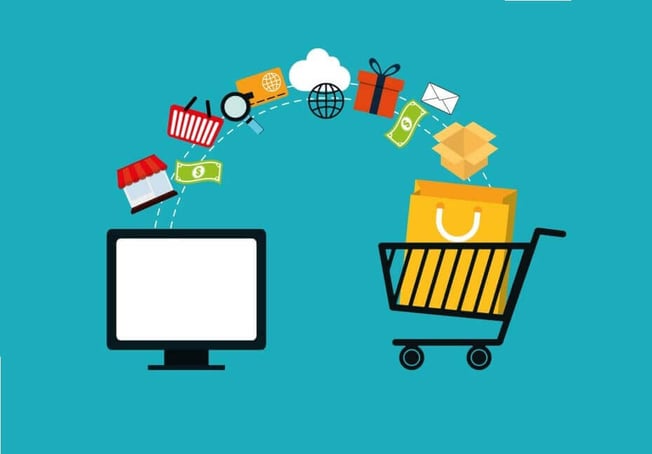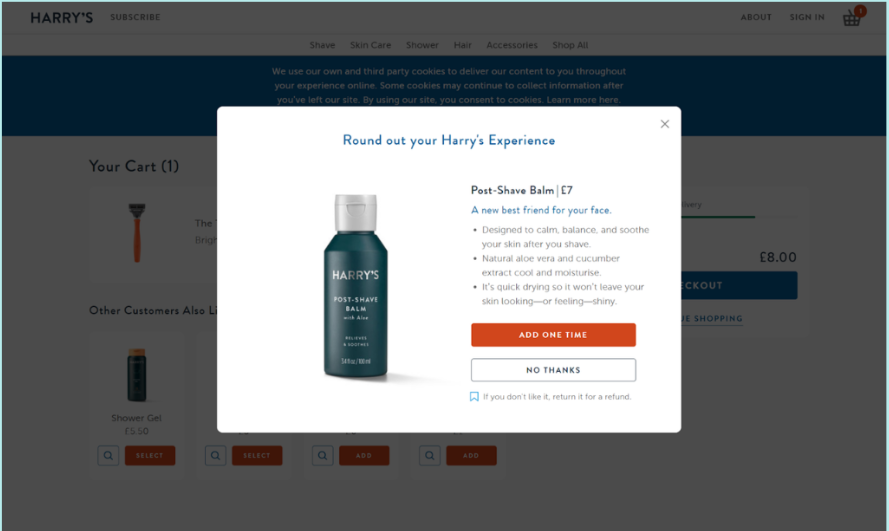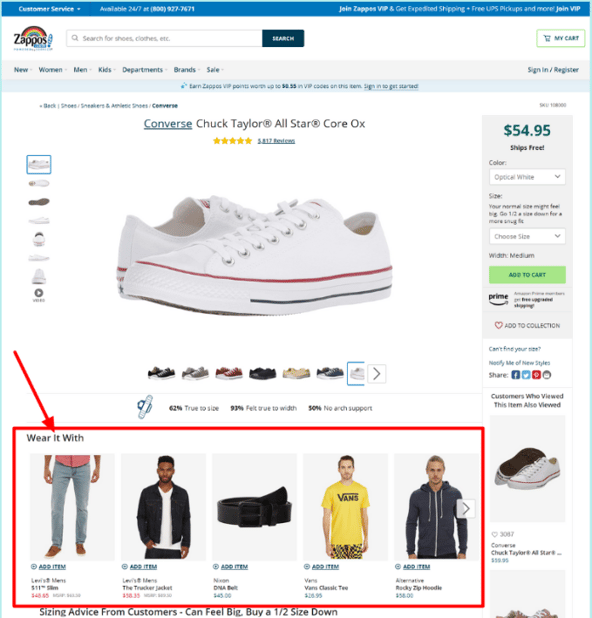Cross-selling Strategy Guide: Skyrocket Your eCommerce Sales
Increasing your eCommerce business revenue can be done through multiple ways. Launching new products, raising your prices, offering sales and promotions are some ways to maximize your revenue. However, how you sell your products to your potential and existing customers is one of the most important.
Cross-selling and upselling are one of many sales and marketing tactics that you can use in your business strategy while selling your products on your website.
In this article, you will learn how to get much higher revenue by implementing cross-selling techniques.
Here is everything you need to know about cross-selling in eCommerce to improve your sales and maximize your ROI.
Table of Content:
- What is Cross-selling in eCommerce?
- What is The Difference Between Cross-selling & Upselling?
- When to Use Cross-selling in eCommerce?
- How to Use Cross-selling in eCommerce?
- Tips & Tricks For Using Cross-selling in eCommerce
- What Are The Benefits of Using Cross-selling in eCommerce?
What is Cross-selling in eCommerce?

Cross-selling is a sales technique. It involves influencing and encouraging a customer to purchase other relevant products, in addition to the ones they are about to purchase. Most of the time, the products you are cross-selling during your customers’ checkout on your website complement the products or are relevant in some way to the products in their cart.
So what happens is, a customer is about to checkout with the chosen products in their cart on your eCommerce website. Here, you can implement a cross-sell by recommending complementary and related products or providing special offers if purchased together. In most cases, customers tend to make last-minute impulse purchases while checking out.
For example, if a customer is about to buy a smartwatch, there’s a much higher chance they’ll buy a watch strap or screen protector for the watch if the bundle is a good deal. Moreover, Amazon estimates up to 35% of its revenue comes from cross-selling techniques.
What is The Difference Between Cross-selling & Upselling?
People often confuse upselling with cross-selling. While both are extremely important for boosting your sales, you need to know the difference and when each one of them is used.
Upselling is a marketing strategy that influences your existing and potential customers to purchase higher-value products or upgrade a product or a service. For example: offering a medium-sized bag instead of its smaller version or a premium product instead of the original.
Whereas cross-selling is, as we said before, a marketing strategy that persuades your customers to purchase ancillary products.
When to Use Cross-selling in eCommerce?
Timings play a very important role in sales and marketing. Choosing the right time for everything can end up in great results.
Cross-selling usually takes place towards the end of the sales cycle or the buying journey, when customers have already chosen a product and are about to checkout. However, cross-selling can still take place at any time in the buyer’s journey to show them relevant and complimentary products. The best time to cross-sell is when the sale makes sense and when it can achieve its main purpose - maximizing the revenue.
How to Use Cross-selling in eCommerce?
Cross-selling's main objective is to increase revenue and maximize profits, and when done right it should lead to more customer satisfaction. It can add a huge amount of additional revenue by suggesting relevant add-ons to your customer’s original purchase. Cross-selling is most efficient when the additional purchases are small compared to the original purchase.
Here are some strategies to perfectly master your cross-selling strategies and get the results you want.
10 Tips & Tricks For Using Cross-selling in eCommerce
- Use relevant and enticing content on your website. Use phrases like:
“Customers also bought - Frequently bought together - Add these items to your cart” and more phrases that can influence your customer’s decision. - Have a pop-up appear, during the checkout of the order, offering additional relevant items with a special offer. The best pop-ups perform at a conversion rate closer to 10%.

- Add a sense of urgency by offering special promotions
- Always recommend complementary accessories required with your customer’s main purchased product. Bundle-related products so your customers don’t have to go searching for them.
- Keep it simple. Don’t offer too many other relevant products. This can backfire or confuse your audience or reduce your customer’s satisfaction. Limit your cross-selling efforts to certain few related products so that your audience can make up their minds easily.
- Use personalized product suggestions. This can boost your AOV by up to 11%.

- Use a thank you page offer. This technique is considered a post-purchase cross-selling. 100% of customers see your thank you page and visit it on average 2.2 times. This is perfect because it doesn’t interrupt or distract your buyers.
- Follow up with customers with an email after their purchase to influence them to make a new purchase with another related product. You can also offer a discount on their next purchase.
-
Don’t push or force your customers while offering complimentary products. Simply suggest the right and relevant products, follow the best practices and let them decide.
-
You will need to always test what works best for eCommerce and your audience. Use your website backend to gain insights about your audience. Test the timings of your offers and what promotions work best for your customers to identify the most profitable cross-sell strategies for your eCommerce.
What Are The Benefits of Using Cross-selling in eCommerce?
If increasing revenue is the primary objective for your eCommerce business, then cross-selling should be your go-to. Along with increasing revenue, cross-selling has multiple pros for your eCommerce.
- It boosts your AOV (average order value): Online shoppers on your site are in peak buying mode – so it is easy to get them to spend more. It is proven that shoppers who check your product recommendations are almost 500% more likely to add them to their carts.
- It raises your customers’ satisfaction & trust: Cross-selling can alert users to products they forgot they need. When you remind them of those items, you can further earn their confidence as the best retailer to satisfy a particular need.
- It maximizes your profit and earnings.
- Cross-selling can increase a business’s revenue by 20% and its profitability by 30% without spending any more marketing budget.
- Cross-selling is a great way to test new products with no risk.
- It increases your customer life-time value CLV through a deeper understanding of their needs and preferences.
- It helps cost optimization for customers.
- It improves your overall target audience’s shopping experience.
- It helps offer your customers a very personalized buying journey by recommending products that perfectly match their behaviors and preferences. 80% of businesses reported that personalization increases customer spending by 34%.
- It helps you know your customers’ purchasing patterns, buying behaviors, and personal preferences. You can use this later in creating more personalized messages, sales analysis, and getting information to adjust your future stock orders accordingly.
Cross-selling can be extremely efficient and beneficial for your eCommerce business if done and used in the right way at the right time.
Automate Your eCommerce Cross-selling with Convertedin
You no longer have to worry about your sales and marketing strategies and techniques. Converted.in has got your back in all your marketing and eCommerce needs. Converted.in will help you target the right customers, engage shoppers, and save time with ready-made automation templates. Moreover, it will aid in boosting your sales, attracting new shoppers, retaining existing ones, maximizing your revenue and ROI, and doubling your sales.

